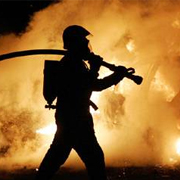How Do Family Ownership, Control, and Management Affect Firm Value?
The death of two Morocco-born minors in the suburbs of Paris on October 27 has unleashed one of the most serious social rebellions in France since the student protests of 1968. The acts of vandalism that began in the French capital expanded to several locations around the country, leaving a toll of nearly 8,000 burned-out vehicles, 2,700 arrests, dozens of wounded, and one death during the first twenty days of the crisis. Given these events, the rest of Europe is fearful of a contagious wave of violence within its borders. What are the causes of the conflict? What consequences will it have for French politics and the French economy? What lessons have been learned?

How Do Family Ownership, Control, and Management Affect Firm Value?
Sign up to stay informed about our latest article releases.